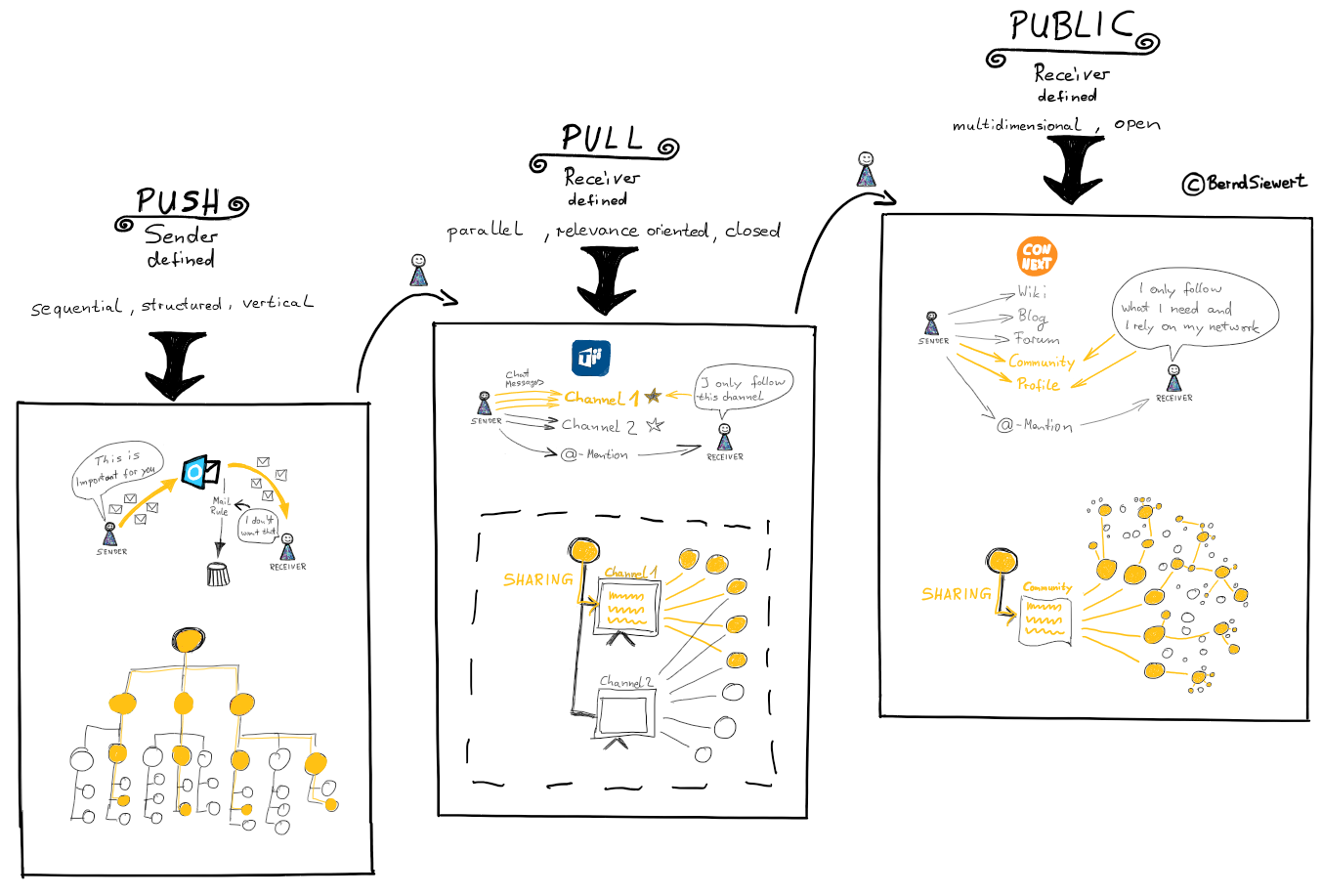The new way of cooperation … and why it does not (yet) work
The new way of cooperation in teams - but how does it really work?
Meanwhile, there are many tools and tool suites that can make the work of each individual easier. However, their power only really unfolds when they support collaboration. Although many companies have already introduced tools, they often get. What is the reason for this? We should focus more on the mindset rather than just the tools and skillsets.
The challenge we face
How do we make existing structures that have grown over decades fit for a “new world” that is constantly changing? A world in which change is the only constant. We are constantly hearing about VUCA, New Work, digitalization, agility, diversity … Meanwhile they are only buzzwords.
Unfortunately, there is no simple recipe. We need an approach that helps the individual in his or her daily work and that promotes the success of the company. We look for simple solutions and find them: some go on as before. Others hope that a new tool, a new process or a new employee will change everything for the better. Disappointment is inevitable. Only those with a holistic concept, who communicate it clearly and who take a long-term approach will be successful. The foundation is a common communication and collaboration culture. It will not appear overnight but must be nurtured like a delicate plant. If too much is expected too quickly, it will die. Its fertilizer is trust.
Working Smart Together
Several tools and tool suites pave our way into a new world the way into the new world because they lay the much-needed foundation that makes the new way of working possible. Not everyone recognizes this. The added value that the interaction of the various tools offers can be explained but I first understood it when I was in daily use. Many people experience it the same way.
- Documents that I no longer search for but find immediately.
- I no longer send documents in ascending version numbers, but work together and simultaneously in the cloud.
- Meeting minutes to which my colleagues have immediate access and in which tasks are defined that end up directly in my ToDo.
- Surveys that I create in a few minutes and adapt just as quickly.
- I have automated simple tasks that required several work steps and much more.
Nevertheless, I am not using all possibilities yet and I never will. Because the new tools are Evergreen. That means I don’t have to wait years until a new update is released. Every day when I start my laptop, bugs are fixed and features are added.
For some, that’s WOW! For others … frightening. The thought of never being finished, having to learn all one´s life in a time where no one has time. Early adopters see things differently. They are open to new things and look forward to trying them out. The remaining 97.5% prefer to wait and see.

Overcoming old paths
What is currently happening in many companies? Some have not yet realized that the way they work is changing – NewWork is irritating them. They don’t know what they don’t know. Others see the changes and are overwhelmed. They respond in two ways: ban and laissez-faire.
This worries employees and slows down business processes. Some therefore only use familiar tools. Others use tools that make their work easier, even if it means breaking internal rules. This is a pity, because it often hampers those employees who are crucial to the success of the company.
Bans without alternatives frustrate. Laissez-faire leads to a confusion of tools. The work is regularly hindered by issues such as: will today’s virtual meeting be held with Skype, MS Teams, Webex, BlueJeans, Zoom, Hangout, …? Are the files stored in OneDrive, Dropbox, iCloud, Google Drive, …?
In corporations, cross-border cooperation requires a common language. When it comes to tools, we talk Gibberish. This leads to misunderstandings and delays. And could be so easy if we agree on a common language/toolset

To make it work, we need a suitable tool or toolset (such as Office 365, GSuite, Slack, etc.) This is the first stumbling block: a tool/toolset alone is not enough. Those who expect the employees to familiarize themselves with the new tools on their own will be disappointed. Even if marketing and HR support the roll-out, many employees ask the same question: Why?
What is the added value of the tools? Recently, new tools did not help me, and the way I do my work, it just fine. Besides, I have no time to bother with that anyway.
In addition to the toolset, we need a skillset. Those who have understood this, plan workshops, training courses and eLearnings. Who conducts these trainings? Of course the IT. After all, these are IT tools. And there starts a new problem. Not a technical one, but a human one. Many IT professionals are excellent at what they do! This does not mean that they are familiar with the new tools and that they have experience in the added value the tools bring to the operative employee. And most importantly, how to communicate new knowledge in a way that is understood, applied and brought into everyday work. I still remember a full-day tool training with horror. Although I had some previous knowledge, I was game-over within one hour. For other participants, the game was finished earlier.
In my next article at MtD I will show a way how this new way of collaboration can work (of course linked here).

Comments are closed.